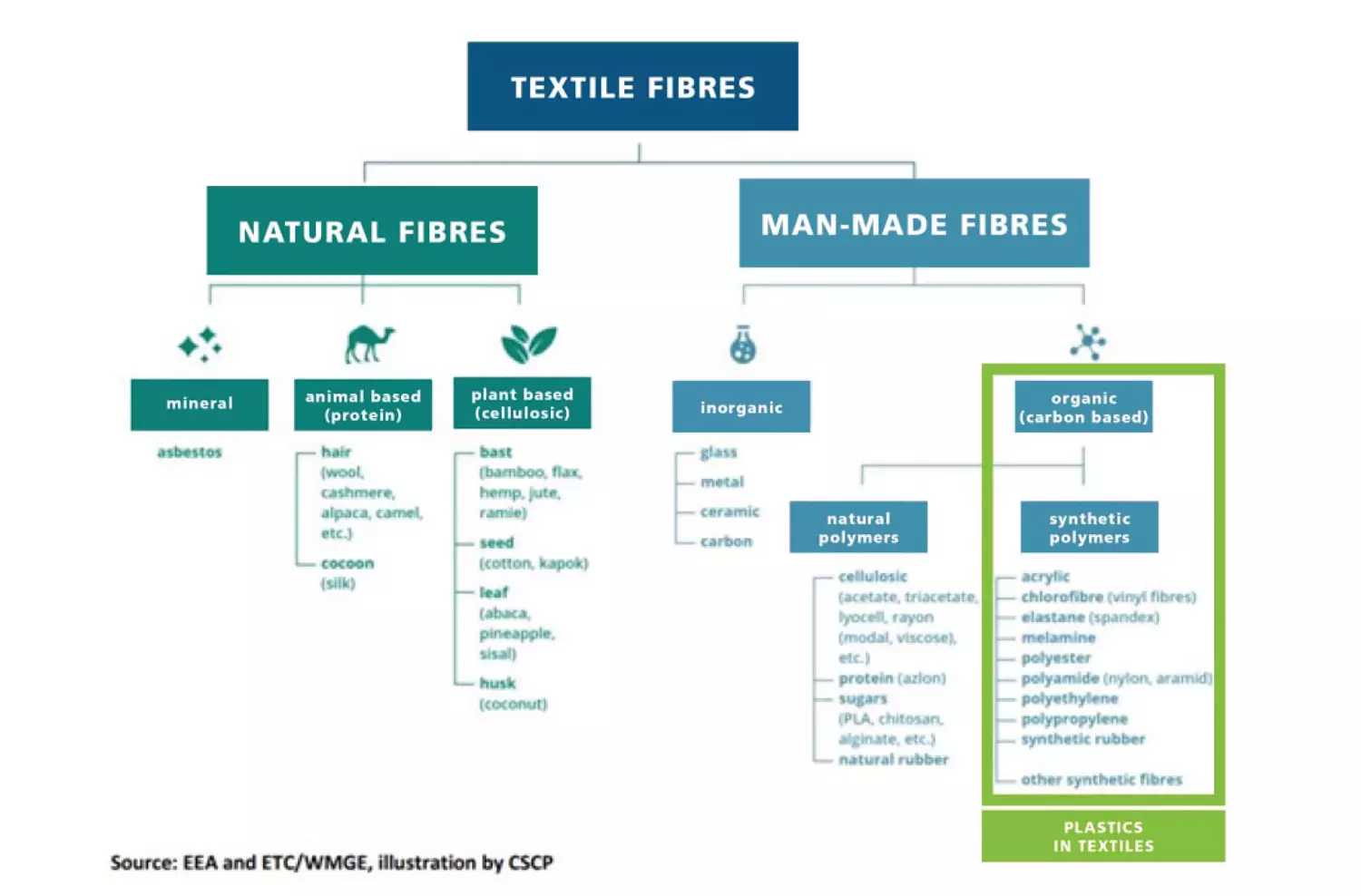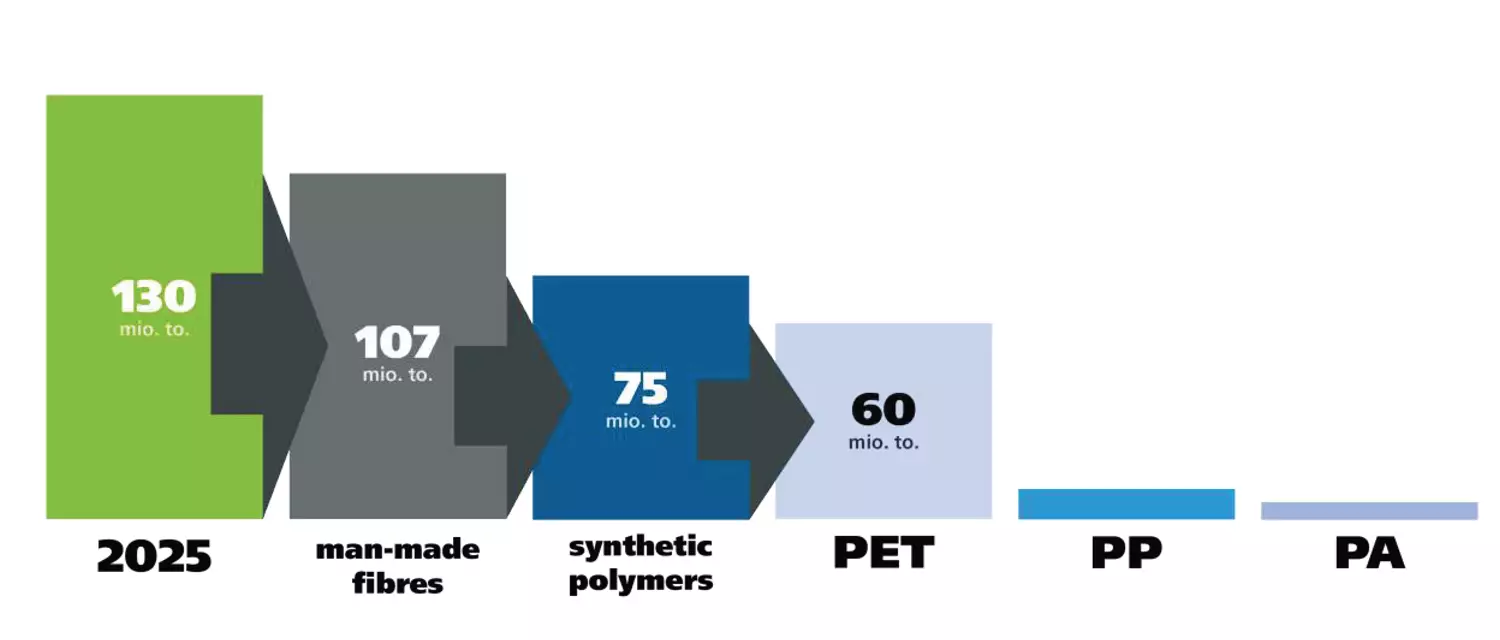The potential of industrial fiber recycling
Today, fibers and textiles are being produced in ever-increasing numbers. This means there is a growing need for sustainable solutions and the topic of fiber recycling is taking on greater significance.
Recycling fibers from production waste and post-consumer textiles has great potential. It could help avoid large amounts of waste and save resources. This not only reduces the environmental impact but also the demand for new raw materials.
But how has fiber production developed over the years? How precisely can the potential of recycling be expressed in figures? And what solutions are already available today? Read our blog article to find out.
How has fiber production developed in recent decades?
Global fiber production has risen significantly due to continual technological innovations and improved production processes. And it is not only the fast fashion industry that is behind this development. Man-made fibers or synthetic fibers can be found everywhere. As a result, the need for efficient fiber recycling is becoming increasingly pressing especially for these synthetic polymers.
While there were 30 million tons of them in 1980, 130 million tons are expected by 2025.


Of those 130 million tons, 107 million are man-made fibers. Of these, 75 million are synthetic fibers, made up of
- 60 million PET
- 15 million PP and PA
What potential does industrial fiber recycling have?
Along the textile value chain, huge amounts of waste are generated. Production or cutting waste remains after the following work steps:
- Fiber production and spinning process
- Weaving and knitting
- Manufacture of textile products
- Packaging, shipping and logistics

In total, this results in 40 million tons from industrial recycling alone. And this does not include the potential offered by post-consumer fiber recycling. Other areas that can be considered because closed loop systems are conceivable and possible include:
- Work clothes (e.g. annual replacement)
- Catering and the hotel industry (e.g. tablecloths)
- Banners for advertising (e.g. at major sports events) and other purposes
Existing recycling technologies have the potential to drive 80% circularity in the fashion industry if fully scaled.“ Scaling Circularity, McKinsey & Company and Global Fashion Agenda, 2021
Together with partners from the textile industry, we are also working on solutions for design for recycling. This is because certain combinations can make recycling more difficult and thus negatively impact the quality of the regranulate. These include:
- Fiber types and materials for example, mixed man made fibers such as poly-cottons, poly elastane, natural fibers
- Colorants
- Zippers
- Buttons
- Labels
The aim here is to work with the industry to improve circularity for recycling fibers from textile products.
Which fiber recycling solutions are already available today?
With the ISEC evo shredder-extruder solution, PURE LOOP has developed a versatile recycling machine for the fiber and textile industry. It is already being used successfully for processing production waste. The machine can recycle the following types of fibers:
- Fiber types: PE, PP, PA, PET
- Fiber forms: fiber bales, ropes/cables, filaments, textiles, nonwovens, unstretched fibers, and clumps from starting up and shutting down.
The ISEC evo FibrePro:IV system represents a major technological advance. It is the further development of the ISEC evo machine and allows the recycling of continuous PET fibers and fabrics into high-quality fiber applications.
This is achieved with the IV-Uptimiser which has been adapted to the tough demands of the fiber industry. It is only thanks to this innovation that regranulate quality can be increased to such an extent that it can be processed into extremely fine fibers.
This is how it works:
- The fiber waste from production processes is fed into the machine in unshredded form.
- Beyond the shredder it passes in a controlled flow into the extruder and is filtered.
- The quality of the resulting melt is improved in the IV-Uptimiser with constant stirring, in combination with vacuum and subsequent dwell time. During this process, molecular chains are renewed and the intrinsic viscosity is increased. As a result, 100% of the regranulate can be spun again.
Thanks to this outstanding quality, the regranulate can be reprocessed into fibers without the addition of new raw material.
Conclusion: Growing potential in fiber-to-fiber recycling through industrial waste
In recent decades, fiber production has risen significantly. A further sharp increase to up to 130 million tons is expected by 2025.
The industry's production waste alone has a market potential of 40 million tons, and post-consumer recycling offers even more opportunities.
Consequently, there is also a growing need for sustainable solutions for fiber recycling in order to save resources.
With its shredder-extruder systems, PURE LOOP has already made a valuable contribution to the production of high-quality regranulate. Now, with the new ISEC evo fibrePRO:IV system, it is also possible to recycle PET fibers and fabrics. And these of a quality that makes it possible to produce fibers again from the resulting regranulate. The fiber-to-fiber cycle is now complete.
If you want to know more about the circular economy in textiles, click here to read about our project with RadiciGroup and SHIMANO.